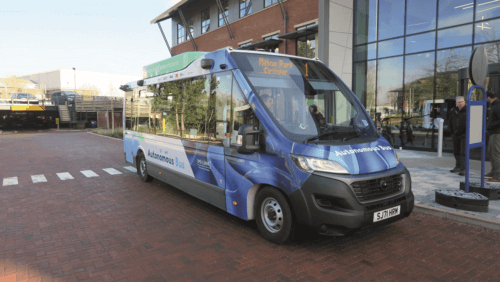
Milton Park, First Bus and partners have launched a bus service with a difference in Oxfordshire. Martin Curtis reports
The official launch of the first zero-emission autonomous bus service in the UK took place on 23 January at Milton Park, Didcot. This £4.3m project has been led by First Bus and largely supported by the UK Government. The launch was attended by Buses Minister Richard Holden and Janette Bell, Managing Director of First Bus.
Milton Park is a major business, science and technology park in Oxfordshire where 250 businesses and 9,000 people are based. It has a network of internal connecting roads whilst also being served by local bus services.
Funding and partners
Funding for the project has been provided by the Department for Transport’s Centre for Connected and Autonomous Vehicles (CCAV) and a number of other partners. In addition to those mentioned elsewhere, they include the Centre for Transport & Society at the University of the West of England (UWE), Zipabout, which created the journey planner and QR codes for the service, and NovaModus consultants. Oxfordshire County Council, South Oxfordshire District Council and the Vale of the White Horse have all assisted in bringing the service to fruition.
[…]By subscribing you will benefit from:
- Operator & Supplier Profiles
- Face-to-Face Interviews
- Lastest News
- Test Drives and Reviews
- Legal Updates
- Route Focus
- Industry Insider Opinions
- Passenger Perspective
- Vehicle Launches
- and much more!


